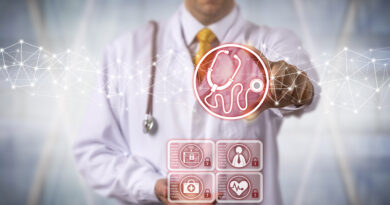Export to Asia, China, Japan, Vietnam, where should I start
Are you a business owner with aspirations of expanding your market reach to Asia? With its diverse cultures, thriving economies, and growing consumer bases, Asia presents a plethora of opportunities for businesses seeking to export their products. In this comprehensive guide, we’ll take you through the essential steps to kickstart your journey to export success in three prominent Asian countries: China, Japan, and Vietnam.
Introduction
When it comes to global business expansion, Asia stands out as a promising destination. The region’s rapid economic growth, technological advancements, and cultural diversity make it a fertile ground for businesses aiming to expand their horizons. However, the road to success in Asian markets requires careful planning, adaptability, and a deep understanding of each country’s unique dynamics.
In this guide, we will delve into the intricacies of exporting to Asia, focusing on the key markets of China, Japan, and Vietnam. From navigating cultural differences to devising effective marketing strategies, we’ll equip you with the knowledge and insights needed to make informed decisions and establish a strong foothold in these competitive markets.
Understanding the Asian Market
Exploring Market Opportunities
Asia’s dynamic markets offer a wide array of opportunities for exporters. With a growing middle class and increasing disposable incomes, consumer demand for diverse products is on the rise. It’s essential to conduct thorough market research to identify niche segments and high-demand products within each country.
Cultural Considerations
Culture plays a pivotal role in shaping consumer preferences and behavior. Tailoring your products to align with local customs and traditions can significantly enhance your market penetration. This involves understanding cultural symbols, festivals, and social norms to effectively position your brand.
Legal and Regulatory Landscape
Each country has its own set of trade regulations and compliance requirements. From import/export licenses to product certifications, ensuring legal conformity is crucial to prevent any setbacks during the export process.
Navigating Language Barriers
While English is widely spoken in business circles, embracing the local language can foster better communication and build stronger relationships. Localizing marketing materials and product information can make a substantial difference in capturing consumer trust.
Getting Started: The Basics of Exporting
Identifying Your Export Goals
Before venturing into Asian markets, define clear and achievable export goals. Determine whether you aim to establish a presence in all three countries or focus on one initially. Your goals will shape your strategy and resource allocation.
Market Research and Analysis
Thorough market research is the foundation of a successful export venture. Analyze market trends, consumer behavior, and competitor strategies to identify gaps and opportunities.
Finding Reliable Distribution Channels
Choosing the right distribution channels is vital for seamless product delivery. Whether it’s partnering with local distributors or utilizing e-commerce platforms, a well-structured distribution network ensures wider market reach.
Crafting Your Export Strategy
Tailoring Your Product for Asian Markets
Adapting your product to meet local preferences and needs can give you a competitive edge. Consider factors such as size, color, packaging, and functionality to align with consumer expectations.
Pricing and Positioning Strategies
Price your products strategically to remain competitive while factoring in costs, taxes, and local pricing norms. Effective positioning highlights the unique value your product offers to the target market.
Branding and Localization
Building a recognizable brand requires thoughtful localization. Translating brand messages and incorporating culturally relevant elements into your marketing materials can enhance brand resonance.
Entering the Chinese Market
Overview of the Chinese Market
China’s vast population and booming economy make it a lucrative market for exporters. Understanding the market’s dynamics, consumer behaviors, and trends is essential for a successful entry.
E-commerce and Retail Trends
E-commerce is a dominant force in China’s retail landscape. Platforms like Alibaba and JD.com offer extensive reach, while innovative retail technologies provide immersive shopping experiences.
Partnering with Local Businesses
Collaborating with local partners can facilitate market entry. Distributors, agents, and joint ventures can provide valuable insights, networks, and logistical support.
Easing into Chinese Social Media
Chinese social media platforms like WeChat and Sina Weibo are powerful tools for marketing and engagement. Crafting engaging content and utilizing influencer marketing can help you connect with your target audience.
Capitalizing on Opportunities in Japan
Japanese Consumer Behavior and Preferences
Understanding the discerning preferences of Japanese consumers is key to tailoring your products and marketing strategies. High quality, uniqueness, and attention to detail are highly valued.
Retail Landscape and Distribution Channels
Japan’s retail sector offers a mix of traditional brick-and-mortar stores and innovative retail concepts. Partnering with local retailers and leveraging e-commerce platforms can maximize your market presence.
E-commerce and Mobile Commerce
E-commerce growth in Japan is driven by mobile commerce trends. Optimizing your online shopping experience for mobile devices is crucial for capturing the Japanese market.
Building Trust and Relationships
Japanese business culture emphasizes trust and long-term relationships. Cultivating strong relationships with partners, suppliers, and customers can contribute to sustainable success.
Tapping into the Vietnamese Market
Emerging Market Potential in Vietnam
Vietnam’s rapidly evolving economy and young population present abundant opportunities. The growing middle class seeks a wide range of products, creating a favorable environment for exporters.
E-commerce Growth and Online Marketplaces
E-commerce adoption is on the rise in Vietnam, with platforms like Shopee and Lazada gaining popularity. An effective online presence can open doors to a vast and digitally-savvy consumer base.
Cultural Nuances and Consumer Behavior
Understanding Vietnamese cultural nuances and consumer behaviors is essential for effective marketing. Tailor your messaging and offerings to resonate with the local mindset.
Logistics and Fulfillment Challenges
Efficient logistics and order fulfillment can be challenging in Vietnam. Partnering with reliable logistics providers and optimizing supply chain processes is crucial for smooth operations.
Overcoming Export Challenges
Navigating Trade Regulations and Customs
Each country has its own set of trade regulations, tariffs, and customs procedures. Engage with experts to ensure compliance and avoid delays or penalties.
Dealing with Tariffs and Taxes
Tariffs and taxes can significantly impact your export costs. Consider seeking advice on tax optimization strategies to minimize financial burdens.
Intellectual Property Protection
Safeguarding your intellectual property rights is paramount. Register trademarks and patents to prevent counterfeiting and unauthorized use of your brand and innovations.
Mitigating Currency Exchange Risks
Fluctuations in currency exchange rates can affect your profitability. Hedging strategies and financial instruments can help mitigate potential risks.
Sustainable Business Practices in Asia
Environmental and Ethical Considerations
Consumers in Asia are increasingly conscious of environmental and ethical concerns. Incorporating sustainable practices and addressing social responsibility can enhance your brand’s reputation.
CSR Initiatives and Local Community Engagement
Corporate Social Responsibility (CSR) initiatives resonate with Asian consumers. Engaging with local communities and supporting social causes can build strong goodwill.
Packaging and Eco-Friendly Solutions
Minimize your environmental footprint by adopting eco-friendly packaging solutions. Biodegradable materials and efficient packaging designs can contribute to sustainability.
Embracing Technology for Export Success
Utilizing E-commerce Platforms
E-commerce platforms provide a direct channel to consumers. Optimize your online store, leverage data analytics, and offer seamless payment options to enhance user experience.
Data Analytics for Market Insights
Data-driven insights enable better decision-making. Analyze consumer behavior, sales trends, and market demands to refine your marketing and product strategies.
Digital Marketing Strategies
Digital marketing is essential for reaching online-savvy Asian consumers. Leverage social media, influencer partnerships, and targeted ads to create a strong online presence.
Supply Chain Automation and Optimization
Streamline your supply chain with automation and optimization. From inventory management to order processing, efficiency in operations can lead to cost savings and improved customer satisfaction.
FAQs
FAQ 1: How Do I Begin the Export Process?
To start exporting to Asia, conduct thorough market research, identify target countries, assess regulations, and establish a clear export strategy.
FAQ 2: What Cultural Aspects Should I Consider?
Respect cultural norms, symbols, and traditions. Tailor your products and marketing to resonate with local preferences.
FAQ 3: How Can I Protect My Intellectual Property?
Register trademarks and patents in your target countries. Seek legal advice and engage in IP protection measures.
FAQ 4: What E-commerce Platforms Are Popular in Asia?
In China, platforms like Alibaba and JD.com are popular. Shopee and Lazada are widely used in Southeast Asia.
FAQ 5: How Can I Manage Currency Exchange Risks?
Consider hedging strategies and financial instruments to mitigate currency exchange rate risks.
FAQ 6: What Are Some Sustainable Packaging Practices?
Use eco-friendly materials and efficient packaging designs to reduce environmental impact.
FAQ 7: Which Digital Marketing Channels Work Best in Asia?
Social media platforms like WeChat, Line, and Instagram, along with influencer marketing, are effective in reaching Asian consumers.
FAQ 8: How Do I Choose the Right Distribution Channels?
Evaluate local distributors, agents, and e-commerce platforms based on your target market and product type.
FAQ 9: What Are the Key Legal Considerations for Exporting?
Understand trade regulations, licensing, labeling, and compliance requirements in your target countries.
FAQ 10: How Can I Adapt My Product for Asian Markets?
Consider size, color, functionality, and cultural preferences when adapting your product for Asian consumers.
Conclusion
Exporting to Asia, particularly to countries like China, Japan, and Vietnam, offers immense potential for businesses seeking growth and expansion. By embracing cultural diversity, understanding market nuances, and adopting strategic approaches, you can position your brand for success in these dynamic markets. Remember to stay adaptable, invest in relationships, and continually refine your strategies to thrive in the ever-evolving Asian business landscape.
Top reading:
- Distributor.asia
- SeoChina
- Youtube
- Export to China




